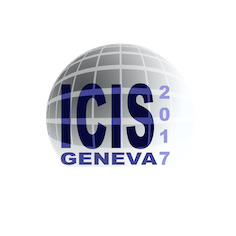Speaker
Description
The Accelerator Laboratory at the University of Jyväskylä (JYFL) has performed radiation effects testing of electronics since 1998 using a K130 cyclotron and cocktail beams produced with ECR ion sources (ECRIS). Currently most of the tests are done at 9.3 MeV/u energy which is achievable with the charge states produced by the 14 GHz ECRIS of the laboratory. The radiation effects community has shown a strong desire to reach 15 MeV/u, which is approaching the limits of achievable charge states without superconducting ECR technology using the K130 cyclotron, i.e. requiring ions with $m/q < 3$. A high-energy cocktail has been proposed to be used at JYFL with Xe$^{44+}$ as the heaviest component. Production of such very high charge states have so far been demonstrated only with fully superconducting ECRIS, e.g. 18 GHz SUSI at MSU. The desire for the very high charge states has initiated a project to push the performance of normal conducting ECRIS by developing an 18 GHz ECRIS HIISI (Heavy Ion Ion Source Injector). The new ion source being developed features several novel ideas to reach the high magnetic fields required for the production of the highest charge states: The permanent magnet hexapole is refrigerated down to $-20^\circ$C allowing the use of high-remanence, low-coercivity permanent magnet grade N45SH otherwise unusable in such application. The cooling also increases the remanence of the magnets by up to 5% compared to room temperature. The source has a non-cylindrical plasma chamber with 5 mm deep grooves on the magnetic poles to increase the radial mirror ratio within the plasma flux. The injection field has been optimized using a structure with magnetic steel plug with a Permendur tip and a magnetic steel bias disc. The source has three coils allowing tuning of $B_\textrm{min}$ independently of $B_\textrm{inj}$ and $B_\textrm{ext}$. At nominal solenoid currents of $I_\textrm{inj}$/$I_\textrm{ext}$/$I_\textrm{middle}$ = $1000$/$820$/$-300$ A the field values are $B_\textrm{inj}=2.80$ T, $B_\textrm{ext}=1.30$ T, $B_\textrm{min}=0.42$ T and $B_\textrm{rad}=1.32$ T. The plasma can be heated using microwaves from three separate waveguide ports for 18 GHz klystron, 14 GHz klystron and 11-18 GHz TWTA, with a total microwave power capacity of 5 kW.
The commissioning is under way. The first beam from the new ion source was extracted in May 2017. So far the source has produced 160 $\mu$A of O$^{7+}$ beam with 600 W of 18 GHz microwave power. In this paper the design of the 18 GHz ECRIS is presented together with the most recent results producing high charge-state oxygen and xenon beams.
